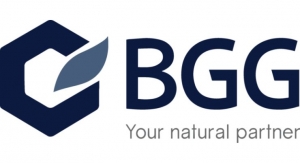Nancy Fogg-Johnson & Alex Merolli04.01.07
Consumers remain extremely interested in products that prevent the development of disease and maintain quality of life. Diet, nutrition and a growing list of non-nutritive substances found in foods, herbs and non-traditional sources are some of the key factors implicated in achieving these goals. However, innovation to provide products based on classical and emerging nutrition through functional foods and dietary supplements suffers from a complex set of commercialization hurdles. The regulatory framework for a product or ingredient, and associated disclosure of the effect of its consumption frequently are the first barriers on the road to commercialization and market opportunity. Nonetheless, consumer demand remains strong, presenting an opportunity for entrepreneurs in a position to overcome the challenges.
As Steve Allen, vice president, New Ventures, Nestle, Glendale, CA, recently pointed out, "Big companies have realized that innovation is really tough." In other words, the risk-reward ratio isn't what it should be, especially in the case of large food companies. Right now the risk-reward ratio is the province of smaller, more nimble entities.
Companies like Nestle are best at adding financial capital and market clout to expand a business with an established "proof of concept." In addition, many food companies have reduced their internal R&D staffs, and among those that remain, many are focused on short-term development not longer range, more risky, and often more basic research programs.
So what types of investors are potentially interested in a startup business plan, or even one with minimal established revenues? Consider "Angel" investment, which might be the best option for a startup. The term "Angel Investor" is somewhat of a misnomer as it implies some sort of kindness or altruism. In reality, Angel Investors are simply wealthy individuals who invest their own money for a multitude of reasons. Don't make the mistake, however, of assuming that an Angel Investor is not concerned with earning a fair return on the money invested.
The definition of a fair return is proportional to risk, so there are many instances where the return an angel expects could be higher than that typically expected by a venture capitalist (VC). When accepting angel money, it is important to clearly understand why the angel is investing, what the angel wants in return (in addition to equity), and the timeframe in which they expect a return on their investment. Furthermore, keep in mind that the operational involvement of Angel Investors will vary. Lastly, there is some evidence to suggest that entrepreneurs who have completely passive investors are less likely to be successful.
Because Angel Investors are comprised of individuals or groups of investors that provide very early stage funding without the return-on-investment requirements of VC's, they will typically invest at earlier stages of development-it is common for a startup to begin with angel investment on the order of $50,000. This money might be used to build a prototype or carry out a careful study of the market. Once the startup has successfully moved past this stage it typically pursues VC funding to take it all the way to a liquidity event whereby investors recoup their investment plus profits.
Once a new company has established a stream of revenue, VC investment often becomes more appropriate than Angel funding. By definition, venture capital is capital that is invested in high-risk businesses. And one of the highest risk businesses is the startup. Furthermore, any startup whose founder thinks that his/her business is not high risk should be viewed as a business facing extraordinarily high risk. Thus, one of the criteria used by both Angel and Venture Capital investors in evaluating funding opportunities is known as a "reality" or "feasibility" assessment of the business plan, along with likelihood of commercial viability in a given timeframe.
A venture fund typically starts when its managers (the VC's) solicit commitments from groups that have large amounts of cash that must be profitably invested, such as insurance companies and pension funds. These sources of capital agree to allow the VC's to invest a set amount of money (usually millions of dollars) over a fixed time period (typically seven to 10 years) and become partners in the fund. The aggregate of the partners' funds can reach hundreds of millions of dollars.
Three years after the partner commitments are obtained, the VC's seek and evaluate investment opportunities, which are often high risk but at the same time offer the potential of correspondingly higher returns (50% to 100% annually). They also seek investments that have a clear mechanism, allowing them to harvest their returns-called a liquidity event-within the time window of the fund.
After the investment phase, the VC's oversee the strategy and operation of companies that they have invested in, typically by holding one or more seats on the board of directors. If a company is not progressing according to plan and an investment starts to go bad, the VC may even take over operations of the company, inserting VC-selected management at any and all levels within the company. Any time during or at the end of the life of the fund, VC's attempt to liquidate their holdings through a sale of the company or Initial Public Offering of stock (IPO). In addition to fees for operating the investment fund, VC's receive a percentage of the earnings from liquidity events as compensation for identifying, evaluating and overseeing the growth and sale of the company. Remaining proceeds are returned to the partners who provided the capital.
Startups that reach a successful (and lucrative) liquidity event sometimes complain that the 50-100% annual return on investment VC's receive is excessive. However, what many of those successful startups don't realize is VC's often lose all of their money on an investment, while the founders of the startup walk away from the financial wreckage relatively unscathed. In a way, by accepting VC money, the founders are paying for the right to walk away if the startup fails.
As for the returns that VC's receive on successful investments, they should be viewed in the context of overall averages of successful and failed companies. VC's often say that out of 10 investments, one will be hugely successful, three or four will break even and the remainder will result in complete losses.
Consider the following scenario. A VC invests $1 million in each of 10 companies, and it takes five years for each company to either succeed or fail. If the VC makes a 50% annual return on one company and breaks even on four, then the VC return is 1.5^5= $7.6 million for the successful company and $4 million for the breakeven companies, providing an overall return of $11.6 million on an investment of $10 million over five years. This translates to an annual return of 3%. The VC and partners could have earned a higher return by investing the money in U.S. government securities and spending time on the beach. But say the successful company gives the VC an annual return of 100%. This would provide an overall annual return of 30%, which is not entirely unreasonable, especially given the fact that most VC funds are not large enough to have a truly diversified portfolio, which minimizes risk.
The health and wellness market is large and segmented, with each segment offering a composite of several smaller specialty niches that may lead to investment opportunities. The niches are generally characterized by an emphasis on prevention and maintenance, not therapy. Using natural source, non-chemical materials and bioactives, non-pharmaceutical ingredients are key to meeting consumer expectations. At present, these niche segments are small but rapidly growing. There is also "blurring" across segments. In other words, ingredients used in one segment might be applicable to other products in a totally different market. Take vitamin E, for example, which is used in nutritional supplements, as well as in natural personal care products.
In general, there are two types of companies interested in investing in smaller entrepreneurial companies-financial investors looking for substantial returns and strategic investors looking for products and services to expand their business.
With regard to the former, these types of companies invest on behalf of limited partners with the primary goal of significant return. The capital markets have been kind to them recently and the EBITDA (earnings before interest, taxes, depreciation and amortization) multiples have increased with the acquisition of their portfolio companies by larger companies.
Strategic investors on the other hand are primarily looking for a window on innovative new technology. As limited partners/investors they secure access to the flow of product ideas, technologies and business plans from a variety of sources. Doing this helps them monitor both technical and market innovation that can support their base business and/or growth and diversification strategies.
In discussions with several VCs, valuation came up repeatedly. Valuation is simply the process of estimating the value of a company. Valuation is important because it is based on free-market principles, resulting in a market-determined indication of the potential for the company to provide financial return to the founders and investors. Valuation is performed multiple times during the growth and development of a company. In fact, it is a yardstick frequently used in the case of publicly traded companies.
It is common for an initial valuation to be performed very early in the life of a company. For example, when an investor invests $1 million in exchange for 50% of the company's equity (usually stock), the implied value of the company is $2 million. Subsequent investors would then be faced with an investment opportunity in the same company now with higher valuation. An incremental investment of $1 million would garner a lower percentage of the company.
Valuation is a complex process involving judgment, financial analyses and comparison of the revenue-generating offering (product) and the company, compared to values of products and corporations in the actual and potential competitive set. While the phases of valuation are separated for purposes of this presentation, in reality, the phases are iterative or are conducted simultaneously.
One of the standard criteria for evaluating the potential success of a startup is whether the company, the idea upon which it is founded and the product offering is "unique" or differentiated and thus relatively insulated from competition. The variable of "uniqueness" makes valuation difficult. In other words, how does one determine the financial value of a never-before seen business offering?
As an example, consider the process of pricing a used car. This process is difficult because each used car has a unique history, which can affect its value. Nevertheless, many used cars are similar enough that the sales prices from many previous sales can be used to estimate a fair price.
As a more relevant example, imagine that an inventor is seeking investment in a company, which happens to be the first-ever energy bar company. Keep in mind that no one has ever seen an energy bar before, nor has anyone eaten one-a prototype doesn't even exist yet. So how much should an investor pay for 50% of this company? This hypothetical situation is highly representative of the imagination, vision and financial acumen that must be brought to bear on determining what the "energy bar company" is worth, and thus, what an investor should receive in exchange for providing funding.
To help overcome the considerable ambiguity surrounding the valuation process, one common method is to identify companies with known values, offering comparable products and services. In the "new energy bar" example, one might look at the value of other companies manufacturing baked products, or even other baked bar products. The closest comparison could be cereal bar companies. Using the energy bar vs. cereal bar comparison is both helpful and restricting when it comes to assessing the potential value of bars. On one hand, the features and benefits of energy bars might be more desirable than those of cereal bars. However, the upside of the opportunity is limited only by one's imagination.
Valuation can be further complicated by information not available in the public domain. Even when a comparable company is found, if it is privately held, it may be difficult to use it as a comparison or a benchmark because valuations of private companies are often difficult to pinpoint. So not only do you have to find a comparable company, you have to find one that publishes financial information with regard to its operations, which usually means that it is publicly traded. Valuation of the comparable company can then be determined by the number of shares of stock outstanding multiplied by the price/share. That calculation can provide a benchmark of current value.
Since this hypothetical new company has yet to grow and develop a revenue stream, an essential aspect of valuation requires projecting value at some point in the future. For instance, during valuation one might find several comparable companies that are publicly traded. And it might be determined that in the five years the companies have existed, the value of their equity has increased 10-fold such that one would be able to sell all of their equity for a total of $100 million. Given that assessment, how much would you pay for 50% of the hypothetical new energy bar company now? This consideration in valuation is called "present value" or "today's dollars."
Part of the answer to the question of how much to pay today for an anticipated return in the future is based on how much you would pay today if you were guaranteed to be paid $100 million in five years through a risk-free investment vehicle. Certainly you would not pay $100 million because if you invested that money in a risk-free investment such as U.S. government securities, you might be able to make at least 5% per year on your money, in which case your $100 million would be worth $128 million in five years. To put it another way, investing $78 million over a period of five years in a risk-free investment (5% interest) will amount to $100 million. Thus, the "present value" of a guaranteed payment of $100 million five years from now is $78 million.
Further, consider that the 5% rate of return in the previous example assumes that no effort is required on your part-you simply call your broker and buy the securities. In actuality, venture investors spend (or invest) a significant amount of time in research, analyses and negotiation of venture capital investments. Thus a return on those investments is a reasonable and necessary expectation. If we apply this to the pervious example, a 20% return to cover the research, analyses and negotiation costs makes the present value of a risk-free investment $40 million.
But startups are far from risk free. Estimating or projecting valuation that considers probability of success or risk is even more complex, but also more important than an initial valuation. Each step in valuation builds on the previous one, which increases the rigor and judgment that accompanies each step.
The existence, nature and breadth of intellectual property (IP) is judged by some VC's as critical, while others consider forms of commercial insulation more important. Any form of insulation, however, either through IP or other commercial means, can significantly affect perceived risk and can tilt valuation higher or lower. The role of IP and branding influencing investability are beyond the scope of this article, but an entrepreneur should expect that these will be key areas of focus for investors.
The valuation process continues with valuation estimates; you would have to estimate the likelihood that a company will actually be worth $100 million in five years. To simplify things, assume that there are only two possible outcomes: the company fails and is worth zero or the company is successful and sells for $100 million in five years. Once again, one should probably study the success rate of past startups to gauge probability. After analysis, one might decide that the chance of success is one in 10, so in our example the present value of the company is reduced to $4 million, or one would pay $2 million for 50% of the company.
But what if that is not enough money to build the factory that will eventually make the company worth $100 million in five years? Also, what if a key milestone is the production and clinical and market testing of a prototype, which would only cost $200,000 and could be completed in a year? In this case, a staged investment might be more appropriate. In other words, one could invest the $200,000 for 5% of the company, representing a lower capital risk.
Since valuation impacts investment attractiveness, including amount and timing of funds, it is imperative for the entrepreneur to have a clear view of the process, the value elements, and the business being proposed for investment.
So what business opportunities or areas can entrepreneurs expect a potential investor to be interested in? We asked several VCs for their perspectives. Our hypothesis was that IP would be extremely important. However, while the responses we received varied, patents or IP did not rise to the top of the priority list.
According to Dr. Jorg Riesmeier, president, LSP Bioventures, Cambridge, MA, "In the health and wellness space [intellectual property] is not one of the top three [factors]. Time to market and brand insulation are more important for consumer plays." Some degree of insulation for any business is always important. Based on this feedback, the form chosen, however, can vary. For technical-based (or scientifically-focused) businesses, intellectual property might play a bigger role.
By a wide margin, the most important factor considered by investors in making a decision is the company's management. Who are the key players? What has their track record been? For Nestl�'s Mr. Allen, management strength is the single most important factor. He believes it is hard to invest with beginners. Most investors thoroughly examine each of the key manager's past record and experience. References are checked and past record of accomplishment, particularly in generating significant return for past investors is favorably viewed.
In an effort to guide potential entrepreneurs in the health and wellness space, we asked key managers at several VCs for their views on "critical success factors" and "red flags" to avoid in seeking professional investment. Surprisingly, their views were similar, but they weren't views we expected. Dion Madsen, managing director of the newly formed Physic Ventures, San Francisco, CA, recommended "real strong self-criticism before approaching a VC." He also recommended a full disclosure of risks. "Open discussion of ways to mitigate risks demonstrates mature management. During due diligence of the business plan, the VC will identify all risks so it is best to be clear about them upfront," he explained.
Mr. Allen says establishing a good relationship with the board of directors, using them in the formal sense, but also to involving them to help solve problems, will help avoid "ugly surprises."
Dr. Riesmeier suggested having a "crystal clear view of the product and what will be needed to bring it to market." He also pointed out that focusing on a very well defined market is crucial.
Investors also discussed which pitfalls to avoid. "Definitely approach the revenue projections in an optimistic yet realistic manner," said Dr. Riesmeier. In other words, the estimates should be defensible and pass the "smell test." From our experience, everyone realizes that predictions of market adoption are subject to extreme error. Make sure the assumptions behind the numbers are based in fact.
Mr. Allen advised entrepreneurs to pick a [financial] partner carefully. "Not everything will go well," he offered. "VCs want to be partners; after all, they have much to gain from the portfolio company's success." A well-chosen partner is like a well-chosen spouse-compatibility and the ability to resolve inevitable conflicts constructively will be keys to success.
Mr. Madsen emphasized the importance of "choosing a fund with several years of life left in it If a fund will close in one or two years, then there will be much less patience to grow the company and deliver a liquidity event for their returns," he said. Mr. Madsen also suggested choosing a fund with enough financial capacity to fund the company through several financing rounds. Lastly, he recommended securing multiple investors, each with different capabilities, to further the company's success.
By far, the most common point of disagreement between a VC and an entrepreneur relates to valuation. Dr. Riesmeier said to avoid letting this topic ruin the relationship with investors. "At the early stage of a business, founders tend to overestimate the value of their business/idea, while underestimating the risk of failure. Don't be naive, and avoid making valuation the main focus of discussion."
The word "dilution" connotes a reduction, and in the eyes of investors and entrepreneurs is often perceived as a bad thing, something to be avoided. In fact, in the realm of venture capital investing, dilution can be good, bad or neutral.
Dilution refers to the reduction in percent ownership that a shareholder experiences when a new investor invests some money into a company. For example, consider the following scenario. A new company (NewCo) is founded by two people who each invest $100 thousand in exchange for 50% ownership in the company. After a year in operation, the company completes the development of a prototype and needs to buy equipment to start manufacturing the product. The founders do not have working capital so they seek money from an outside investor. The outside investor agrees to invest $2 million in the company in exchange for 60% of the company. After the investment, each founder's ownership drops from 50% to 20%. Their ownership has been diluted. Is this good or bad for the founders?
We believe this is great for the founders. Without this investment, the value of the company is minimal. This investment allows the company to move on to the next phase of development. Furthermore, when the investor invests $2 million for 60% of the company, this is the same thing as saying that 100% of the company is worth $3.3 million. And each founder's 20% share is now worth $666 thousand. This is a good return on their original investment. In this case of dilution, the founders wound up with a smaller piece of a bigger pie.
Some founders think that they would be better off trying to retain 51% of the company in order to maintain control. In principle this might be a good strategy but in practice is often incorrect. In small companies, control of the company is almost always defined by a contract rather than by percent ownership. When investors invest they create a term sheet for the investment. This term sheet typically contains several mechanisms for the investor to take control of the company if things are not going well. In the previous scenario, the term sheet might have a clause that gives the investor complete control of the company if it does not complete its first sale within a year of the investment. In summary, for small businesses percent ownership and control are usually not related, so founders should be more concerned with the value of their share of the company rather than the percent share that they own.
Finally, entrepreneurs must consider how they can extract the value of their investment within five to 10 years. The exit strategy is the mechanism for recovering investment and harvesting profit; investors look for exit strategy options before they make any investments.
One common exit strategy is to simply sell the company to another company. So much business infrastructure is needed to bring a product or service to market that it often doesn't make sense to recreate it. Rather, more economic value is created by selling the startup company to one that already has the infrastructure. It's true that after the sale key managers might not play a role; they may even face unemployment. But if the company created significant economic value, then all should realize benefits from the sale.
Another exit strategy includes an IPO, or selling the original investor's stock to the public via a major stock exchange. This is an involved process and a company must be fairly successful to qualify for an IPO on a major stock exchange. Founders should not view this as a mechanism for maintaining control of their company. In fact, the skills that make a person a good founder may not translate into being a good leader of a larger public corporation. In many cases, founders step down from a leadership role long before the IPO. Also, once a company has gone public, it is required to make quarterly reports to the stockholders. It is the stockholders that now control the company, frequently leaving CEO's to make decisions based on making "the numbers" look good next quarter.
Founders must consider an exit strategy when developing their initial business plans. A founder who wants to create a business that he/she can run until retirement had better not plan on seeking outside investors.
Since we began this effort to help foster innovation in quickly growing health and wellness categories, it has become apparent that an unmet need exists, which presents a major hurdle for entrepreneurs. Few, if any VCs of which we are aware will provide funding for startup companies. Even for VCs, the risks are too great and the time for a return is too long. Angels, friends and family, and federal, state and local government grants must be considered the primary sources of funds for very early stage companies. Our recommendation is to seek creative seed funding, and establish both proof of technical and market concept. Generate a stream of revenue and then approach professional financial or strategic investors who will be very receptive due to a much lower risk profile.
As Steve Allen, vice president, New Ventures, Nestle, Glendale, CA, recently pointed out, "Big companies have realized that innovation is really tough." In other words, the risk-reward ratio isn't what it should be, especially in the case of large food companies. Right now the risk-reward ratio is the province of smaller, more nimble entities.
Companies like Nestle are best at adding financial capital and market clout to expand a business with an established "proof of concept." In addition, many food companies have reduced their internal R&D staffs, and among those that remain, many are focused on short-term development not longer range, more risky, and often more basic research programs.
Angels & Venture Capitalists
So what types of investors are potentially interested in a startup business plan, or even one with minimal established revenues? Consider "Angel" investment, which might be the best option for a startup. The term "Angel Investor" is somewhat of a misnomer as it implies some sort of kindness or altruism. In reality, Angel Investors are simply wealthy individuals who invest their own money for a multitude of reasons. Don't make the mistake, however, of assuming that an Angel Investor is not concerned with earning a fair return on the money invested.
The definition of a fair return is proportional to risk, so there are many instances where the return an angel expects could be higher than that typically expected by a venture capitalist (VC). When accepting angel money, it is important to clearly understand why the angel is investing, what the angel wants in return (in addition to equity), and the timeframe in which they expect a return on their investment. Furthermore, keep in mind that the operational involvement of Angel Investors will vary. Lastly, there is some evidence to suggest that entrepreneurs who have completely passive investors are less likely to be successful.
Because Angel Investors are comprised of individuals or groups of investors that provide very early stage funding without the return-on-investment requirements of VC's, they will typically invest at earlier stages of development-it is common for a startup to begin with angel investment on the order of $50,000. This money might be used to build a prototype or carry out a careful study of the market. Once the startup has successfully moved past this stage it typically pursues VC funding to take it all the way to a liquidity event whereby investors recoup their investment plus profits.
Once a new company has established a stream of revenue, VC investment often becomes more appropriate than Angel funding. By definition, venture capital is capital that is invested in high-risk businesses. And one of the highest risk businesses is the startup. Furthermore, any startup whose founder thinks that his/her business is not high risk should be viewed as a business facing extraordinarily high risk. Thus, one of the criteria used by both Angel and Venture Capital investors in evaluating funding opportunities is known as a "reality" or "feasibility" assessment of the business plan, along with likelihood of commercial viability in a given timeframe.
Establishing a Venture Fund
A venture fund typically starts when its managers (the VC's) solicit commitments from groups that have large amounts of cash that must be profitably invested, such as insurance companies and pension funds. These sources of capital agree to allow the VC's to invest a set amount of money (usually millions of dollars) over a fixed time period (typically seven to 10 years) and become partners in the fund. The aggregate of the partners' funds can reach hundreds of millions of dollars.
Three years after the partner commitments are obtained, the VC's seek and evaluate investment opportunities, which are often high risk but at the same time offer the potential of correspondingly higher returns (50% to 100% annually). They also seek investments that have a clear mechanism, allowing them to harvest their returns-called a liquidity event-within the time window of the fund.
After the investment phase, the VC's oversee the strategy and operation of companies that they have invested in, typically by holding one or more seats on the board of directors. If a company is not progressing according to plan and an investment starts to go bad, the VC may even take over operations of the company, inserting VC-selected management at any and all levels within the company. Any time during or at the end of the life of the fund, VC's attempt to liquidate their holdings through a sale of the company or Initial Public Offering of stock (IPO). In addition to fees for operating the investment fund, VC's receive a percentage of the earnings from liquidity events as compensation for identifying, evaluating and overseeing the growth and sale of the company. Remaining proceeds are returned to the partners who provided the capital.
Startups that reach a successful (and lucrative) liquidity event sometimes complain that the 50-100% annual return on investment VC's receive is excessive. However, what many of those successful startups don't realize is VC's often lose all of their money on an investment, while the founders of the startup walk away from the financial wreckage relatively unscathed. In a way, by accepting VC money, the founders are paying for the right to walk away if the startup fails.
As for the returns that VC's receive on successful investments, they should be viewed in the context of overall averages of successful and failed companies. VC's often say that out of 10 investments, one will be hugely successful, three or four will break even and the remainder will result in complete losses.
Consider the following scenario. A VC invests $1 million in each of 10 companies, and it takes five years for each company to either succeed or fail. If the VC makes a 50% annual return on one company and breaks even on four, then the VC return is 1.5^5= $7.6 million for the successful company and $4 million for the breakeven companies, providing an overall return of $11.6 million on an investment of $10 million over five years. This translates to an annual return of 3%. The VC and partners could have earned a higher return by investing the money in U.S. government securities and spending time on the beach. But say the successful company gives the VC an annual return of 100%. This would provide an overall annual return of 30%, which is not entirely unreasonable, especially given the fact that most VC funds are not large enough to have a truly diversified portfolio, which minimizes risk.
Health & Wellness Investment
The health and wellness market is large and segmented, with each segment offering a composite of several smaller specialty niches that may lead to investment opportunities. The niches are generally characterized by an emphasis on prevention and maintenance, not therapy. Using natural source, non-chemical materials and bioactives, non-pharmaceutical ingredients are key to meeting consumer expectations. At present, these niche segments are small but rapidly growing. There is also "blurring" across segments. In other words, ingredients used in one segment might be applicable to other products in a totally different market. Take vitamin E, for example, which is used in nutritional supplements, as well as in natural personal care products.
Profiling an Investing Company
In general, there are two types of companies interested in investing in smaller entrepreneurial companies-financial investors looking for substantial returns and strategic investors looking for products and services to expand their business.
With regard to the former, these types of companies invest on behalf of limited partners with the primary goal of significant return. The capital markets have been kind to them recently and the EBITDA (earnings before interest, taxes, depreciation and amortization) multiples have increased with the acquisition of their portfolio companies by larger companies.
Strategic investors on the other hand are primarily looking for a window on innovative new technology. As limited partners/investors they secure access to the flow of product ideas, technologies and business plans from a variety of sources. Doing this helps them monitor both technical and market innovation that can support their base business and/or growth and diversification strategies.
Valuation Considerations
In discussions with several VCs, valuation came up repeatedly. Valuation is simply the process of estimating the value of a company. Valuation is important because it is based on free-market principles, resulting in a market-determined indication of the potential for the company to provide financial return to the founders and investors. Valuation is performed multiple times during the growth and development of a company. In fact, it is a yardstick frequently used in the case of publicly traded companies.
It is common for an initial valuation to be performed very early in the life of a company. For example, when an investor invests $1 million in exchange for 50% of the company's equity (usually stock), the implied value of the company is $2 million. Subsequent investors would then be faced with an investment opportunity in the same company now with higher valuation. An incremental investment of $1 million would garner a lower percentage of the company.
Valuation is a complex process involving judgment, financial analyses and comparison of the revenue-generating offering (product) and the company, compared to values of products and corporations in the actual and potential competitive set. While the phases of valuation are separated for purposes of this presentation, in reality, the phases are iterative or are conducted simultaneously.
One of the standard criteria for evaluating the potential success of a startup is whether the company, the idea upon which it is founded and the product offering is "unique" or differentiated and thus relatively insulated from competition. The variable of "uniqueness" makes valuation difficult. In other words, how does one determine the financial value of a never-before seen business offering?
As an example, consider the process of pricing a used car. This process is difficult because each used car has a unique history, which can affect its value. Nevertheless, many used cars are similar enough that the sales prices from many previous sales can be used to estimate a fair price.
As a more relevant example, imagine that an inventor is seeking investment in a company, which happens to be the first-ever energy bar company. Keep in mind that no one has ever seen an energy bar before, nor has anyone eaten one-a prototype doesn't even exist yet. So how much should an investor pay for 50% of this company? This hypothetical situation is highly representative of the imagination, vision and financial acumen that must be brought to bear on determining what the "energy bar company" is worth, and thus, what an investor should receive in exchange for providing funding.
To help overcome the considerable ambiguity surrounding the valuation process, one common method is to identify companies with known values, offering comparable products and services. In the "new energy bar" example, one might look at the value of other companies manufacturing baked products, or even other baked bar products. The closest comparison could be cereal bar companies. Using the energy bar vs. cereal bar comparison is both helpful and restricting when it comes to assessing the potential value of bars. On one hand, the features and benefits of energy bars might be more desirable than those of cereal bars. However, the upside of the opportunity is limited only by one's imagination.
Valuation can be further complicated by information not available in the public domain. Even when a comparable company is found, if it is privately held, it may be difficult to use it as a comparison or a benchmark because valuations of private companies are often difficult to pinpoint. So not only do you have to find a comparable company, you have to find one that publishes financial information with regard to its operations, which usually means that it is publicly traded. Valuation of the comparable company can then be determined by the number of shares of stock outstanding multiplied by the price/share. That calculation can provide a benchmark of current value.
Since this hypothetical new company has yet to grow and develop a revenue stream, an essential aspect of valuation requires projecting value at some point in the future. For instance, during valuation one might find several comparable companies that are publicly traded. And it might be determined that in the five years the companies have existed, the value of their equity has increased 10-fold such that one would be able to sell all of their equity for a total of $100 million. Given that assessment, how much would you pay for 50% of the hypothetical new energy bar company now? This consideration in valuation is called "present value" or "today's dollars."
Part of the answer to the question of how much to pay today for an anticipated return in the future is based on how much you would pay today if you were guaranteed to be paid $100 million in five years through a risk-free investment vehicle. Certainly you would not pay $100 million because if you invested that money in a risk-free investment such as U.S. government securities, you might be able to make at least 5% per year on your money, in which case your $100 million would be worth $128 million in five years. To put it another way, investing $78 million over a period of five years in a risk-free investment (5% interest) will amount to $100 million. Thus, the "present value" of a guaranteed payment of $100 million five years from now is $78 million.
Further, consider that the 5% rate of return in the previous example assumes that no effort is required on your part-you simply call your broker and buy the securities. In actuality, venture investors spend (or invest) a significant amount of time in research, analyses and negotiation of venture capital investments. Thus a return on those investments is a reasonable and necessary expectation. If we apply this to the pervious example, a 20% return to cover the research, analyses and negotiation costs makes the present value of a risk-free investment $40 million.
But startups are far from risk free. Estimating or projecting valuation that considers probability of success or risk is even more complex, but also more important than an initial valuation. Each step in valuation builds on the previous one, which increases the rigor and judgment that accompanies each step.
The existence, nature and breadth of intellectual property (IP) is judged by some VC's as critical, while others consider forms of commercial insulation more important. Any form of insulation, however, either through IP or other commercial means, can significantly affect perceived risk and can tilt valuation higher or lower. The role of IP and branding influencing investability are beyond the scope of this article, but an entrepreneur should expect that these will be key areas of focus for investors.
The valuation process continues with valuation estimates; you would have to estimate the likelihood that a company will actually be worth $100 million in five years. To simplify things, assume that there are only two possible outcomes: the company fails and is worth zero or the company is successful and sells for $100 million in five years. Once again, one should probably study the success rate of past startups to gauge probability. After analysis, one might decide that the chance of success is one in 10, so in our example the present value of the company is reduced to $4 million, or one would pay $2 million for 50% of the company.
But what if that is not enough money to build the factory that will eventually make the company worth $100 million in five years? Also, what if a key milestone is the production and clinical and market testing of a prototype, which would only cost $200,000 and could be completed in a year? In this case, a staged investment might be more appropriate. In other words, one could invest the $200,000 for 5% of the company, representing a lower capital risk.
Since valuation impacts investment attractiveness, including amount and timing of funds, it is imperative for the entrepreneur to have a clear view of the process, the value elements, and the business being proposed for investment.
What do Investors Want?
So what business opportunities or areas can entrepreneurs expect a potential investor to be interested in? We asked several VCs for their perspectives. Our hypothesis was that IP would be extremely important. However, while the responses we received varied, patents or IP did not rise to the top of the priority list.
According to Dr. Jorg Riesmeier, president, LSP Bioventures, Cambridge, MA, "In the health and wellness space [intellectual property] is not one of the top three [factors]. Time to market and brand insulation are more important for consumer plays." Some degree of insulation for any business is always important. Based on this feedback, the form chosen, however, can vary. For technical-based (or scientifically-focused) businesses, intellectual property might play a bigger role.
By a wide margin, the most important factor considered by investors in making a decision is the company's management. Who are the key players? What has their track record been? For Nestl�'s Mr. Allen, management strength is the single most important factor. He believes it is hard to invest with beginners. Most investors thoroughly examine each of the key manager's past record and experience. References are checked and past record of accomplishment, particularly in generating significant return for past investors is favorably viewed.
In an effort to guide potential entrepreneurs in the health and wellness space, we asked key managers at several VCs for their views on "critical success factors" and "red flags" to avoid in seeking professional investment. Surprisingly, their views were similar, but they weren't views we expected. Dion Madsen, managing director of the newly formed Physic Ventures, San Francisco, CA, recommended "real strong self-criticism before approaching a VC." He also recommended a full disclosure of risks. "Open discussion of ways to mitigate risks demonstrates mature management. During due diligence of the business plan, the VC will identify all risks so it is best to be clear about them upfront," he explained.
Mr. Allen says establishing a good relationship with the board of directors, using them in the formal sense, but also to involving them to help solve problems, will help avoid "ugly surprises."
Dr. Riesmeier suggested having a "crystal clear view of the product and what will be needed to bring it to market." He also pointed out that focusing on a very well defined market is crucial.
Investors also discussed which pitfalls to avoid. "Definitely approach the revenue projections in an optimistic yet realistic manner," said Dr. Riesmeier. In other words, the estimates should be defensible and pass the "smell test." From our experience, everyone realizes that predictions of market adoption are subject to extreme error. Make sure the assumptions behind the numbers are based in fact.
Mr. Allen advised entrepreneurs to pick a [financial] partner carefully. "Not everything will go well," he offered. "VCs want to be partners; after all, they have much to gain from the portfolio company's success." A well-chosen partner is like a well-chosen spouse-compatibility and the ability to resolve inevitable conflicts constructively will be keys to success.
Mr. Madsen emphasized the importance of "choosing a fund with several years of life left in it If a fund will close in one or two years, then there will be much less patience to grow the company and deliver a liquidity event for their returns," he said. Mr. Madsen also suggested choosing a fund with enough financial capacity to fund the company through several financing rounds. Lastly, he recommended securing multiple investors, each with different capabilities, to further the company's success.
By far, the most common point of disagreement between a VC and an entrepreneur relates to valuation. Dr. Riesmeier said to avoid letting this topic ruin the relationship with investors. "At the early stage of a business, founders tend to overestimate the value of their business/idea, while underestimating the risk of failure. Don't be naive, and avoid making valuation the main focus of discussion."
Dilution of Ownership: Good or Bad?
The word "dilution" connotes a reduction, and in the eyes of investors and entrepreneurs is often perceived as a bad thing, something to be avoided. In fact, in the realm of venture capital investing, dilution can be good, bad or neutral.
Dilution refers to the reduction in percent ownership that a shareholder experiences when a new investor invests some money into a company. For example, consider the following scenario. A new company (NewCo) is founded by two people who each invest $100 thousand in exchange for 50% ownership in the company. After a year in operation, the company completes the development of a prototype and needs to buy equipment to start manufacturing the product. The founders do not have working capital so they seek money from an outside investor. The outside investor agrees to invest $2 million in the company in exchange for 60% of the company. After the investment, each founder's ownership drops from 50% to 20%. Their ownership has been diluted. Is this good or bad for the founders?
We believe this is great for the founders. Without this investment, the value of the company is minimal. This investment allows the company to move on to the next phase of development. Furthermore, when the investor invests $2 million for 60% of the company, this is the same thing as saying that 100% of the company is worth $3.3 million. And each founder's 20% share is now worth $666 thousand. This is a good return on their original investment. In this case of dilution, the founders wound up with a smaller piece of a bigger pie.
Some founders think that they would be better off trying to retain 51% of the company in order to maintain control. In principle this might be a good strategy but in practice is often incorrect. In small companies, control of the company is almost always defined by a contract rather than by percent ownership. When investors invest they create a term sheet for the investment. This term sheet typically contains several mechanisms for the investor to take control of the company if things are not going well. In the previous scenario, the term sheet might have a clause that gives the investor complete control of the company if it does not complete its first sale within a year of the investment. In summary, for small businesses percent ownership and control are usually not related, so founders should be more concerned with the value of their share of the company rather than the percent share that they own.
Exit Strategies
Finally, entrepreneurs must consider how they can extract the value of their investment within five to 10 years. The exit strategy is the mechanism for recovering investment and harvesting profit; investors look for exit strategy options before they make any investments.
One common exit strategy is to simply sell the company to another company. So much business infrastructure is needed to bring a product or service to market that it often doesn't make sense to recreate it. Rather, more economic value is created by selling the startup company to one that already has the infrastructure. It's true that after the sale key managers might not play a role; they may even face unemployment. But if the company created significant economic value, then all should realize benefits from the sale.
Another exit strategy includes an IPO, or selling the original investor's stock to the public via a major stock exchange. This is an involved process and a company must be fairly successful to qualify for an IPO on a major stock exchange. Founders should not view this as a mechanism for maintaining control of their company. In fact, the skills that make a person a good founder may not translate into being a good leader of a larger public corporation. In many cases, founders step down from a leadership role long before the IPO. Also, once a company has gone public, it is required to make quarterly reports to the stockholders. It is the stockholders that now control the company, frequently leaving CEO's to make decisions based on making "the numbers" look good next quarter.
Founders must consider an exit strategy when developing their initial business plans. A founder who wants to create a business that he/she can run until retirement had better not plan on seeking outside investors.
Summary
Since we began this effort to help foster innovation in quickly growing health and wellness categories, it has become apparent that an unmet need exists, which presents a major hurdle for entrepreneurs. Few, if any VCs of which we are aware will provide funding for startup companies. Even for VCs, the risks are too great and the time for a return is too long. Angels, friends and family, and federal, state and local government grants must be considered the primary sources of funds for very early stage companies. Our recommendation is to seek creative seed funding, and establish both proof of technical and market concept. Generate a stream of revenue and then approach professional financial or strategic investors who will be very receptive due to a much lower risk profile.



























